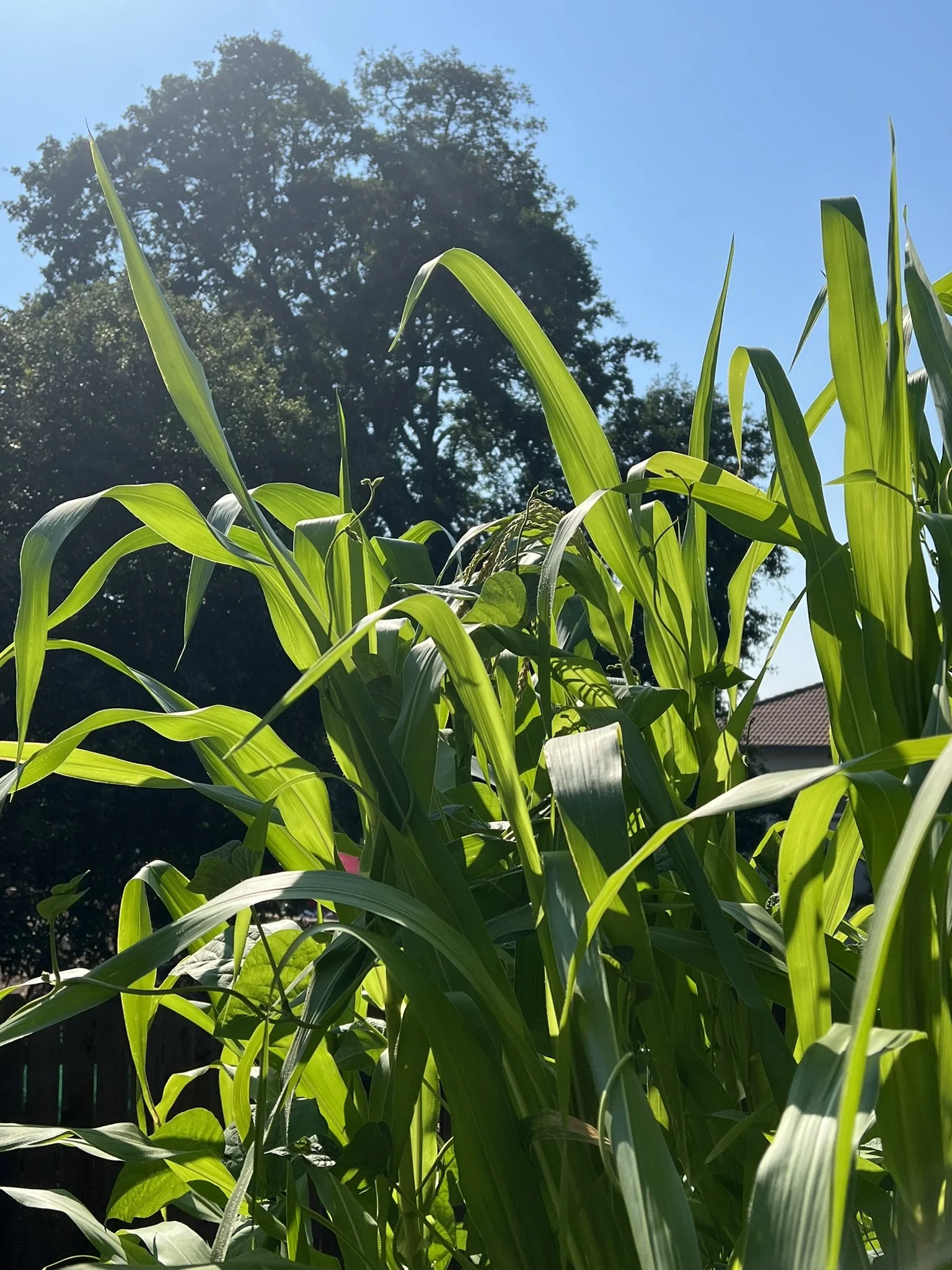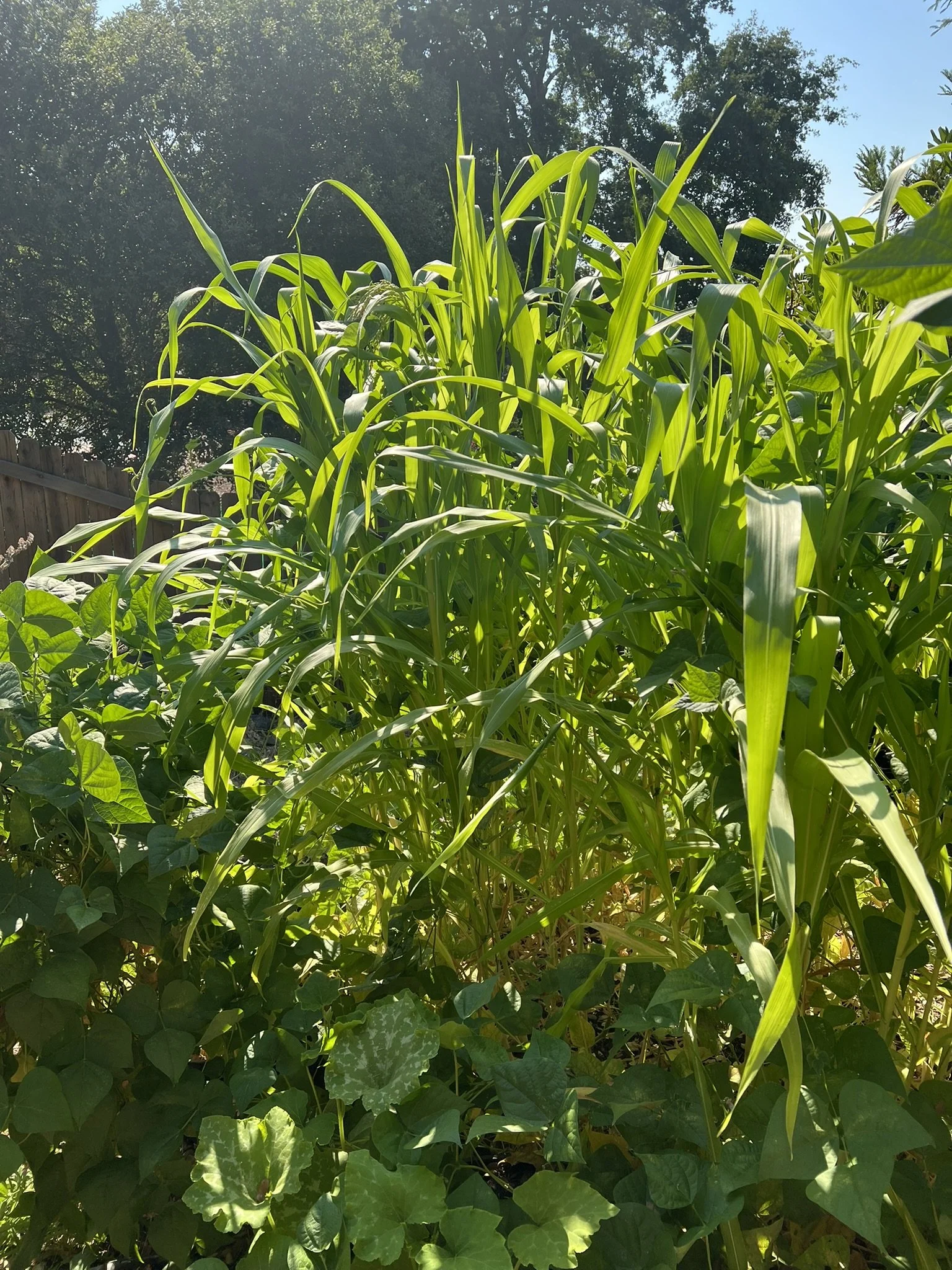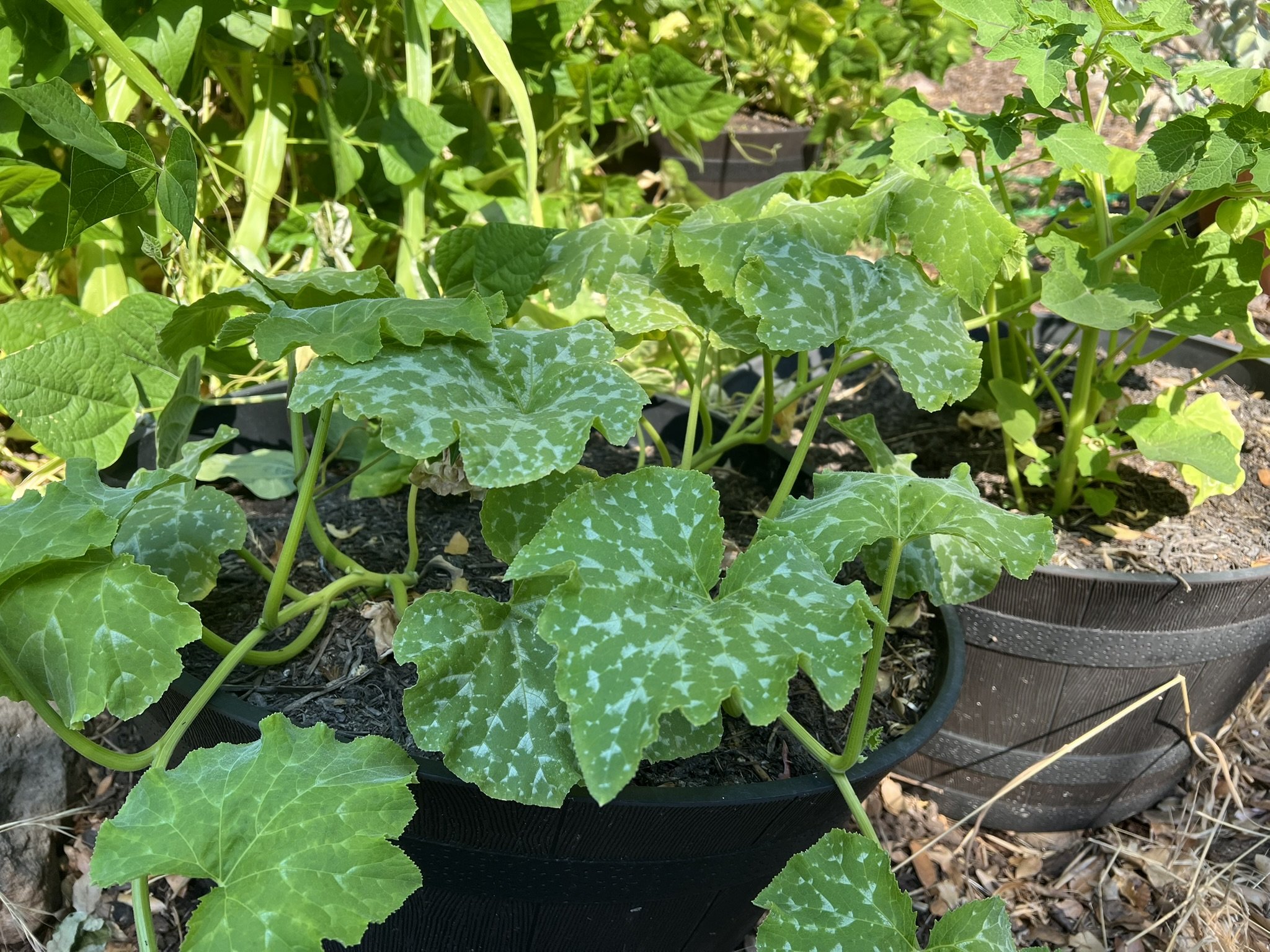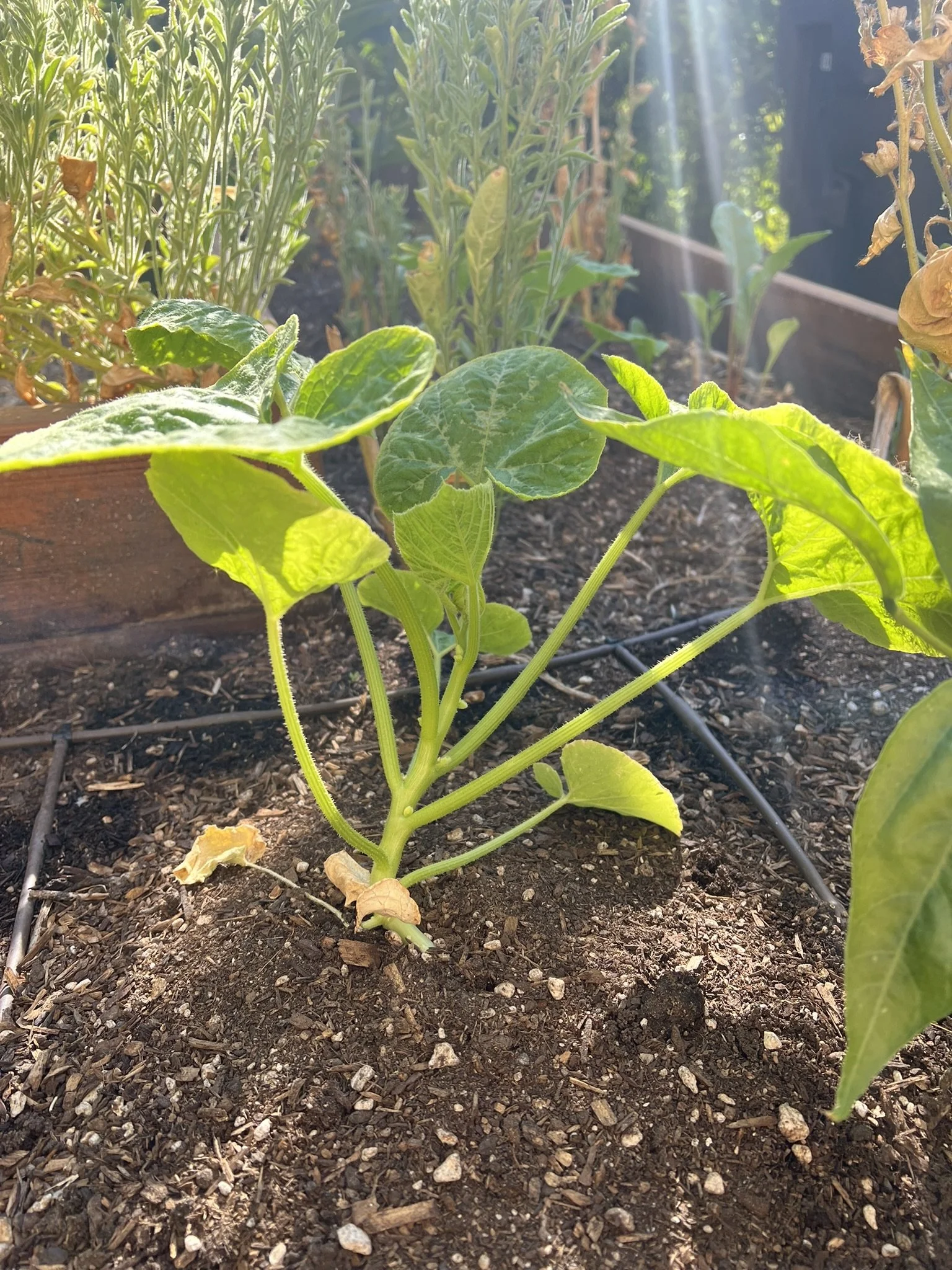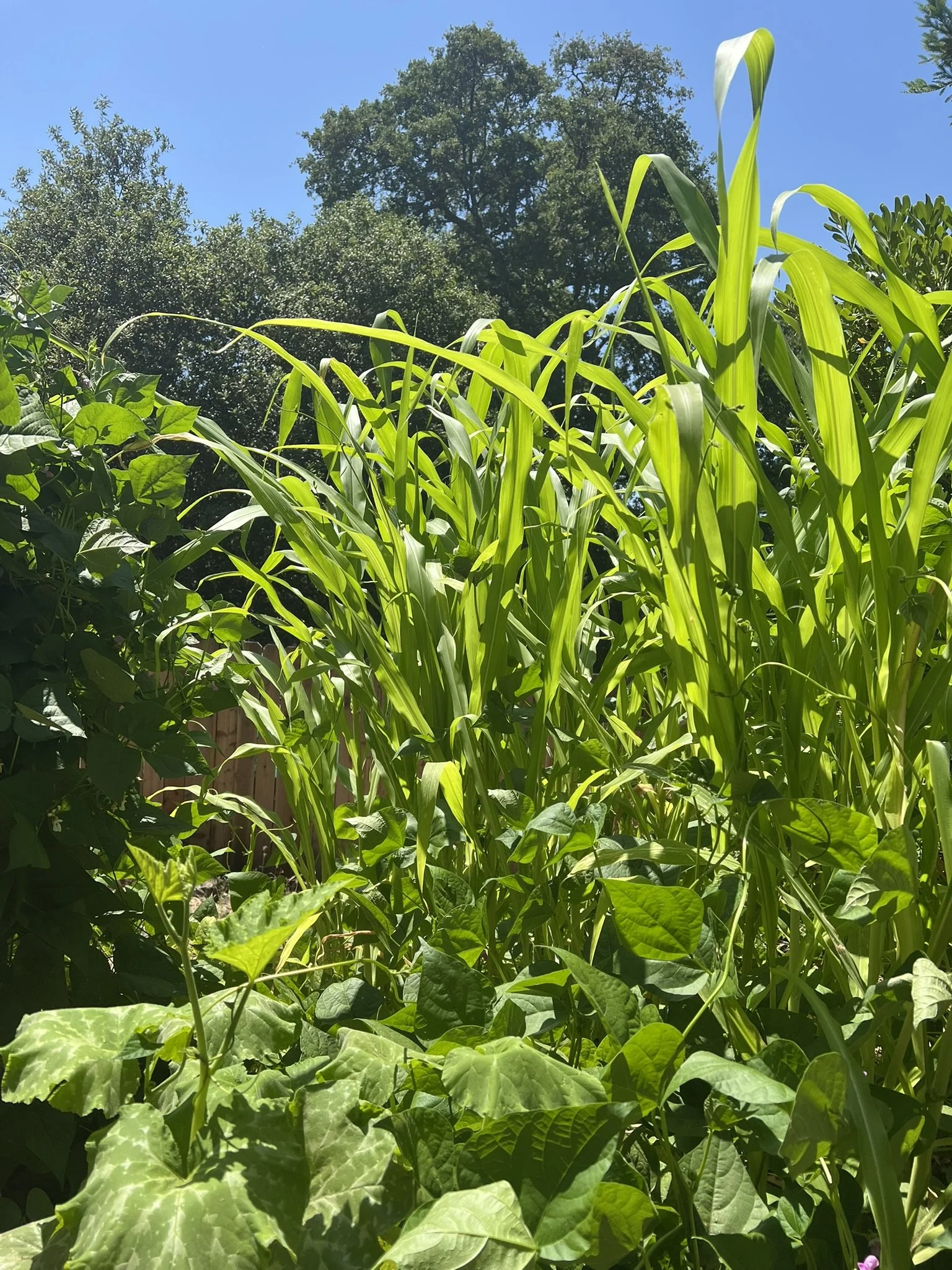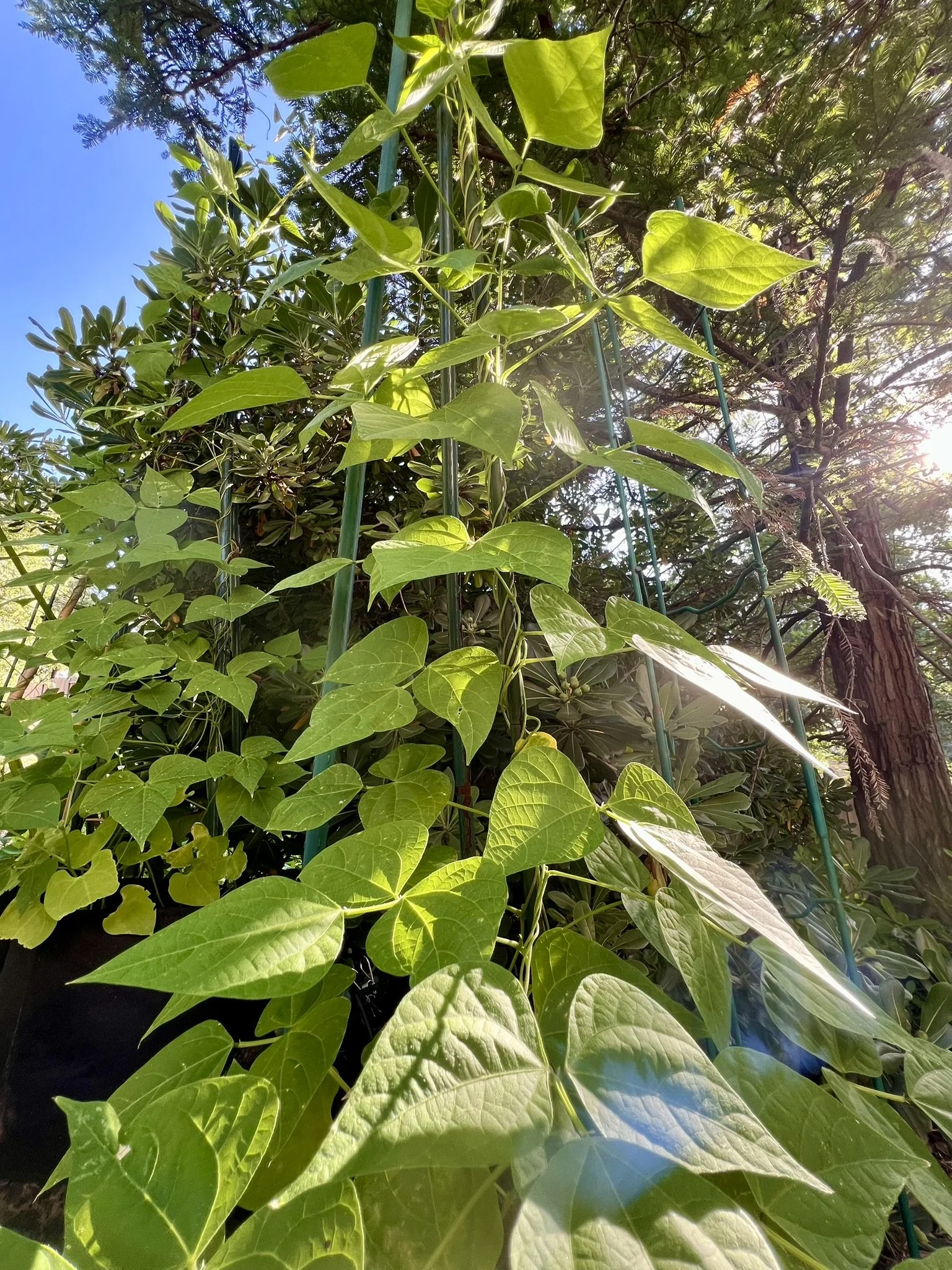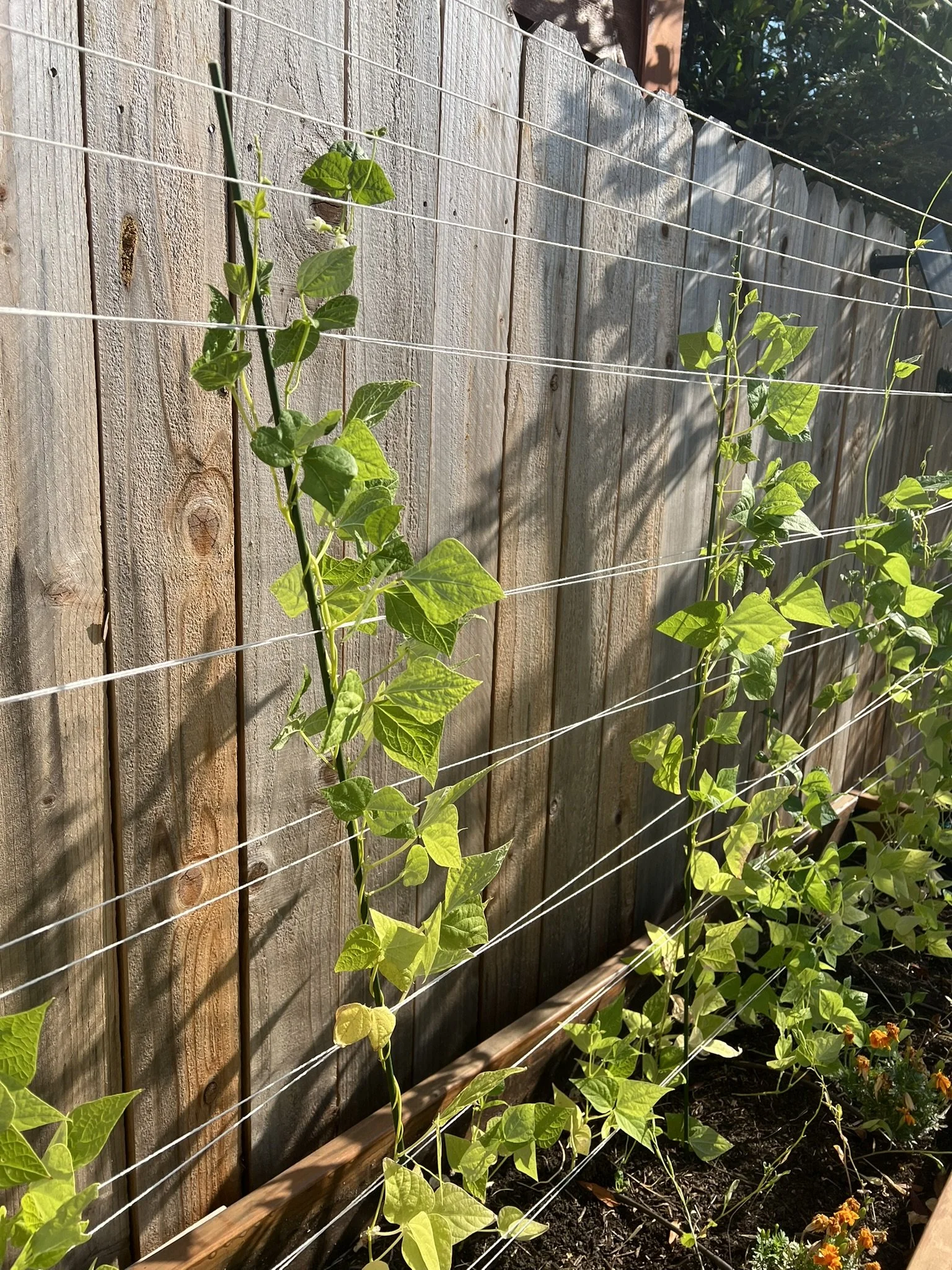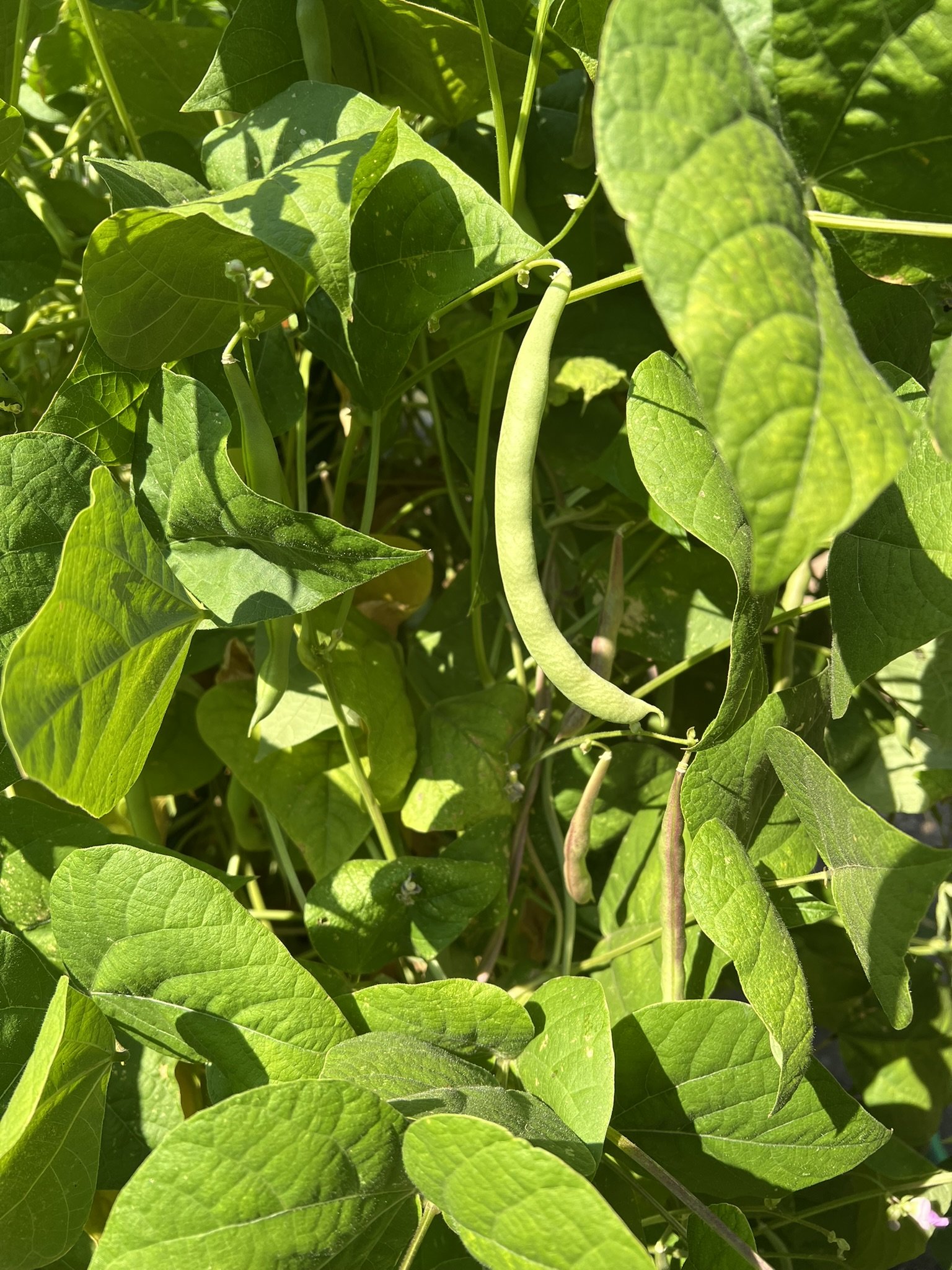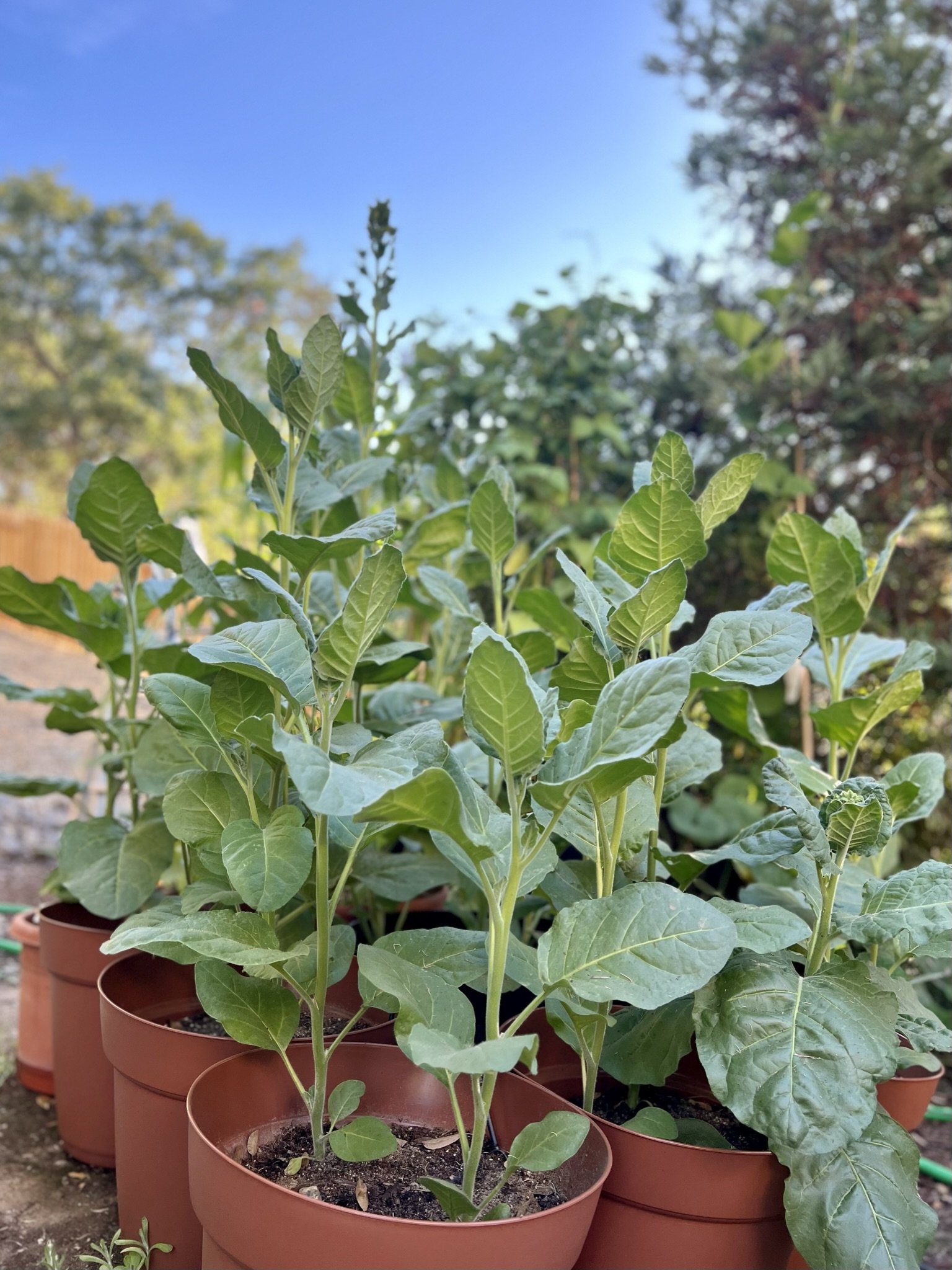Garden Update: July 2025 Harvesting Our Heritage
ᎪᎨᏱ gogeyi (summer) is in full swing!
Our little Cherokee garden continues to grow. Here’s a happy update on the State of of the Garden.
Cherokee Colored Flour Corn
The Cherokee Colored Flour corn has skyrocketed to over 9 feet and has tassels emerging. I’ll be watching out for the budding corn and then corn silks to emerge. Once that happens, I’ll be going out early every morning to shake the corn stalks - this helps drop down pollen from the towering tassels down onto the silks to pollinate. Corn is wind pollinated but since we have a small patch, I find giving them a shake really helps with more even pollination.
Cherokee Squash and Cherokee Tan Pumpkin
Our Cherokee squash and tan pumpkins are growing well. I have noticed the squash (also known as Georgia Candy Roaster) does not have as high a germination rate as many other seeds I start. Happily, I’ve gotten one plant to grow in every mound I planted (I put in three prepared seeds in each). Last year, I did not have as high of a germination rate. The seed preparation I did this year seems to have worked. See more below on this.
Once the squash and pumpkins start flowering, I will need to watch for female flowers closely. They will be separated by some trees and a fence but well within 1000 feet of each other. This means they might cross pollinate if I’m not careful. My process is to visit the garden every morning to hand pollinate female flowers and bag them. When I know I have a good pollination that was protected from cross pollination, I tie a very loose string around the stem so I know which I can later harvest for seeds and which are simply good eats.
As a surprise, I found a self-seeded and very robust ground cherry plant growing with my pumpkins - far from where I grew them last year. I thank the birds because ground cherries are tasty!
A Note on Seed Preparation
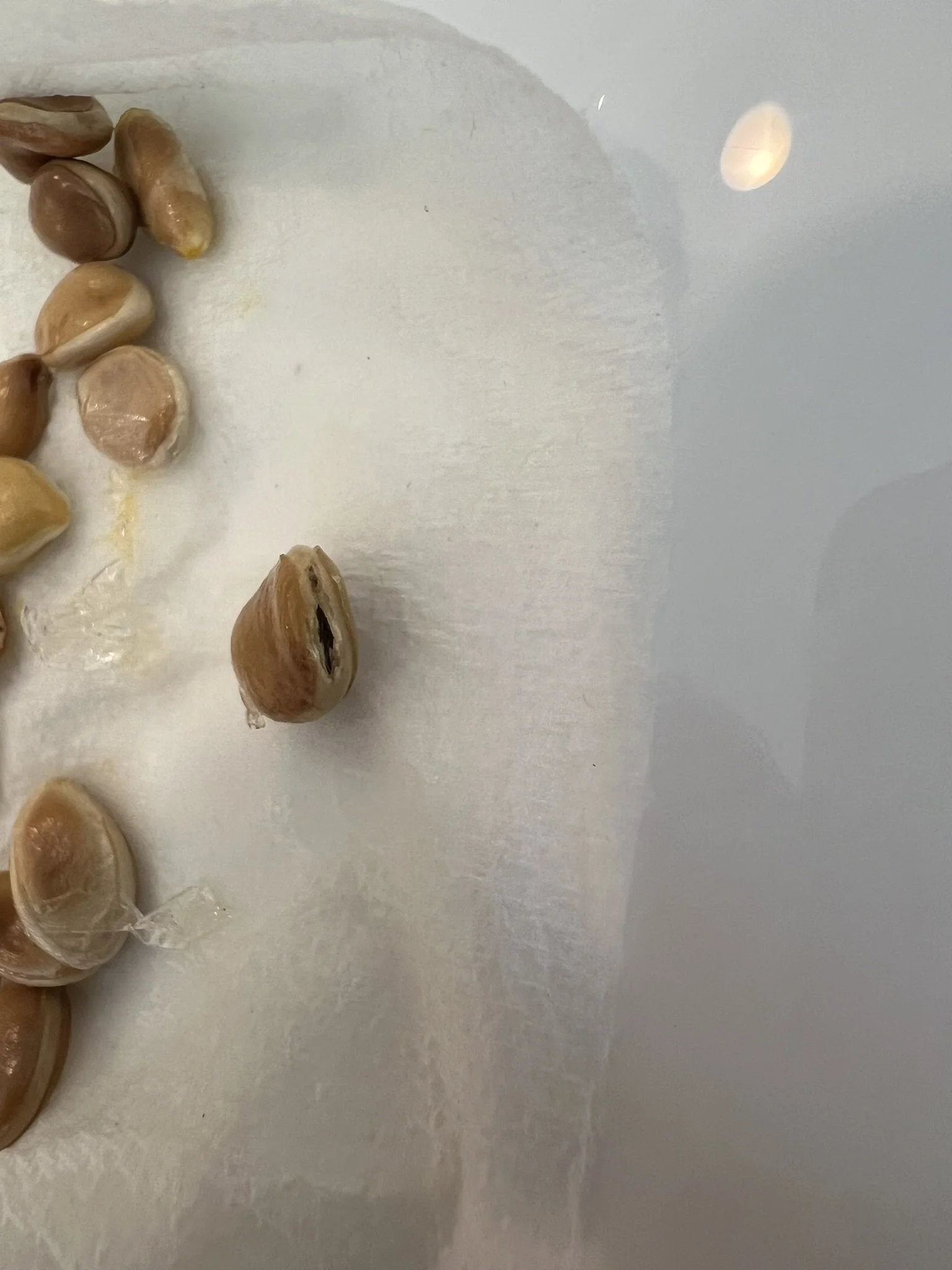
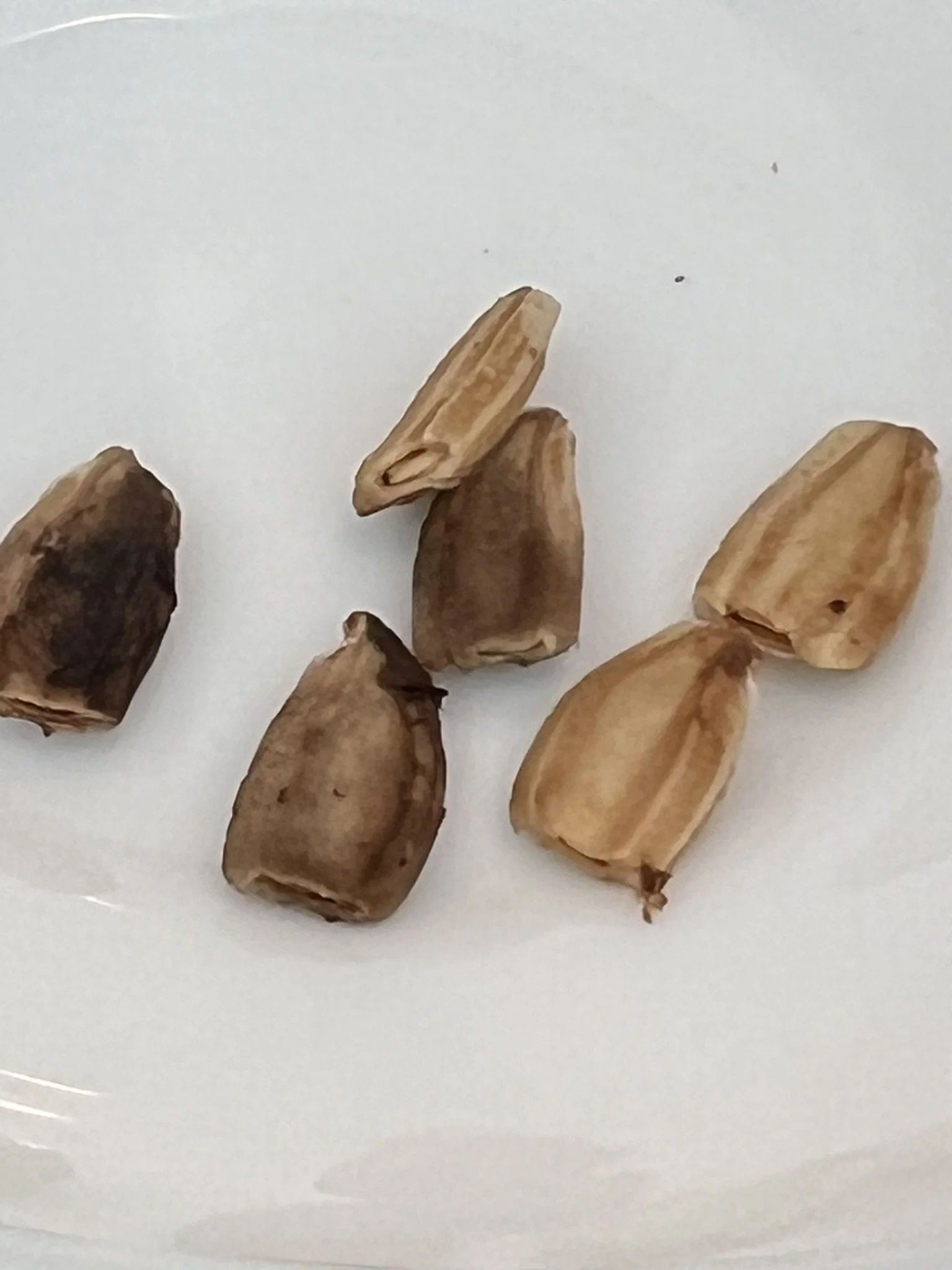
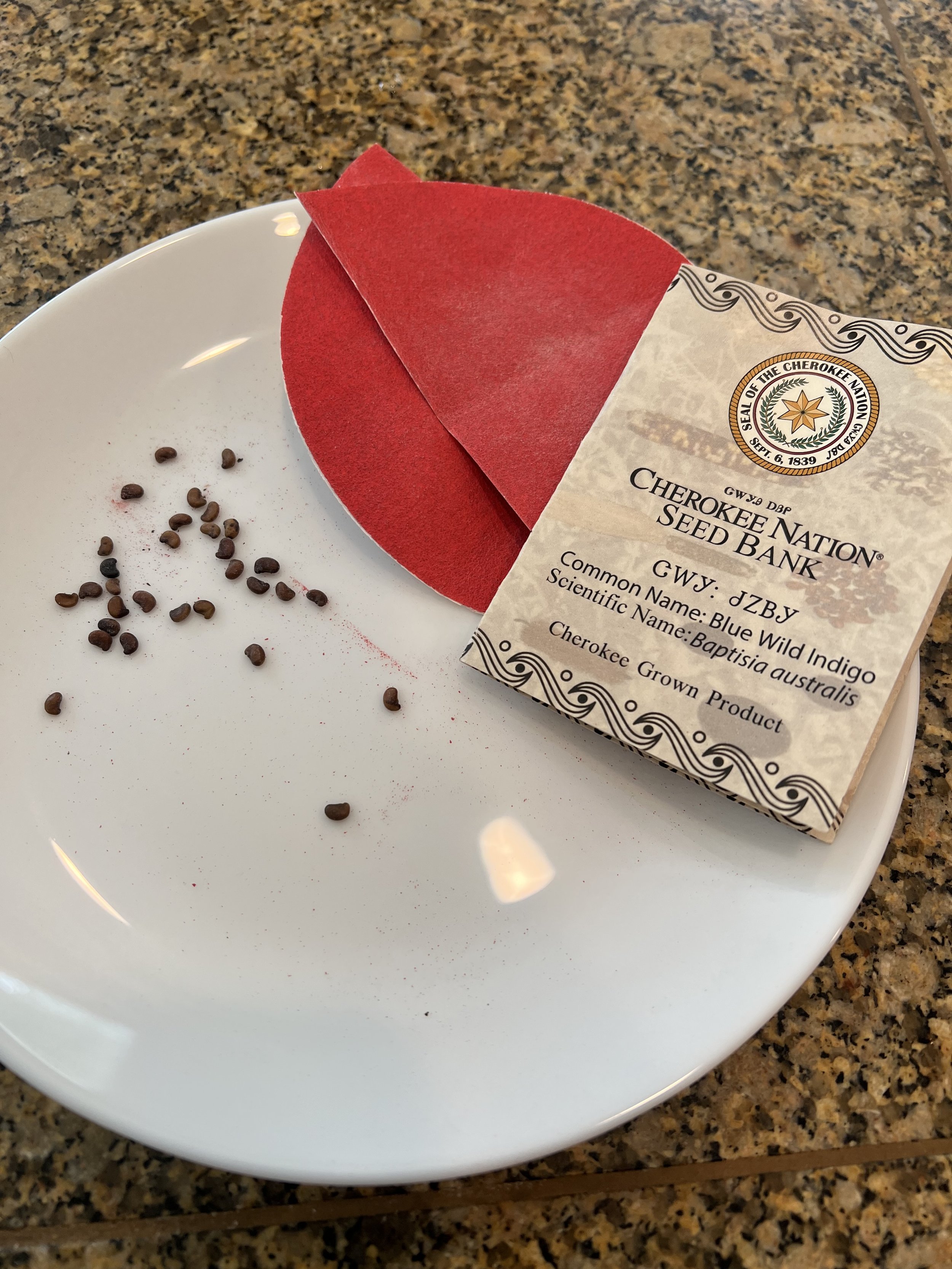
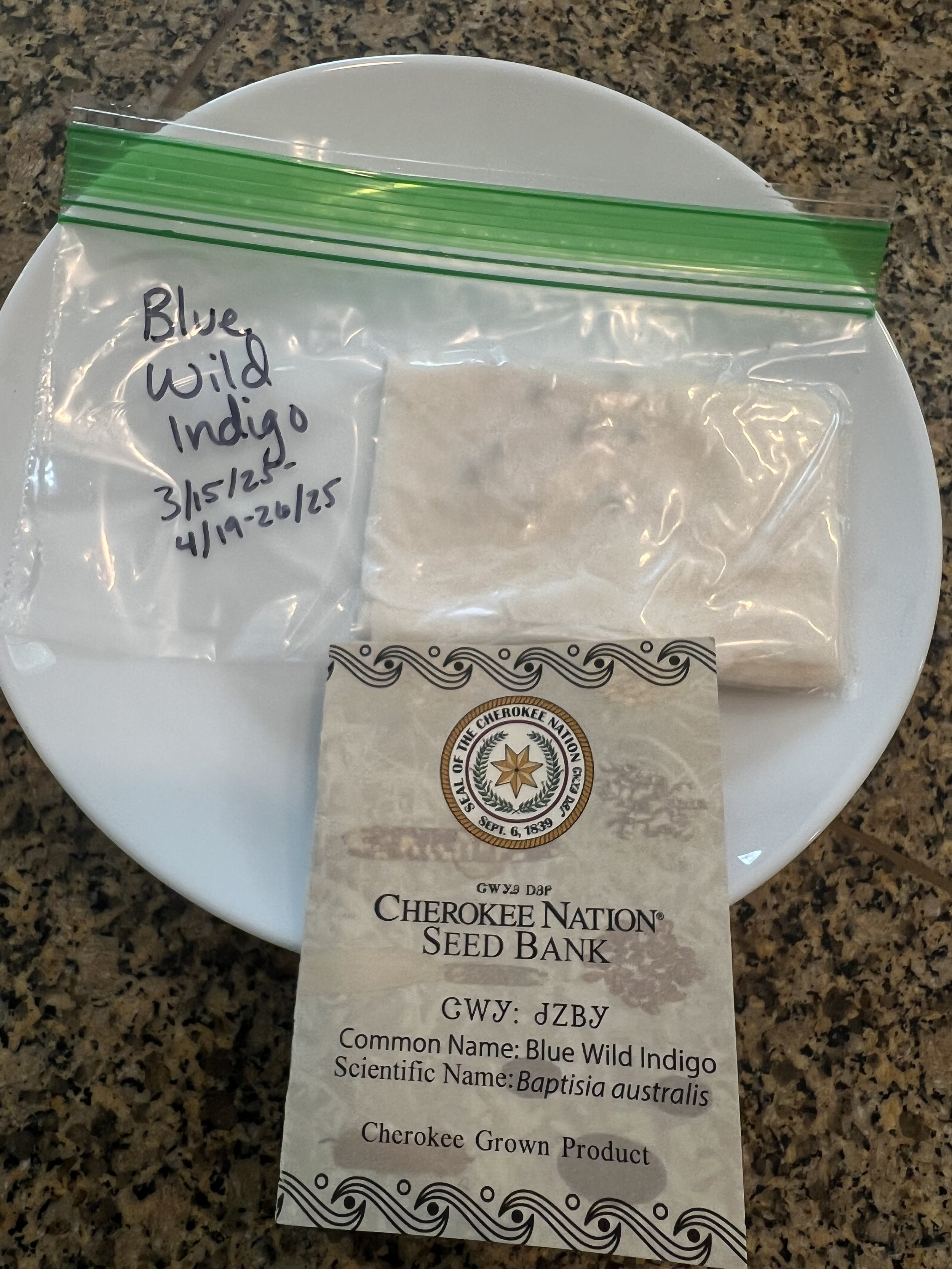

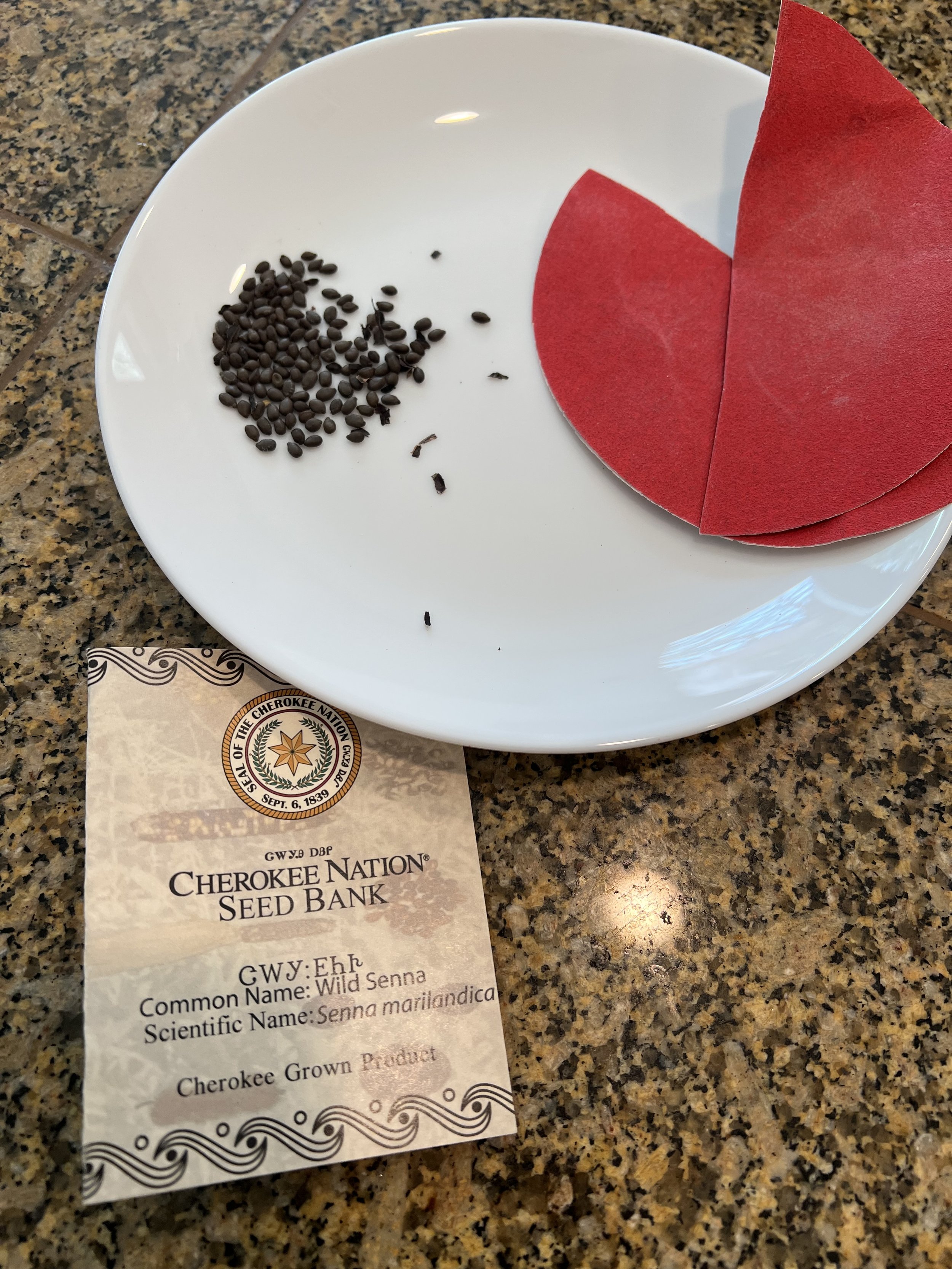
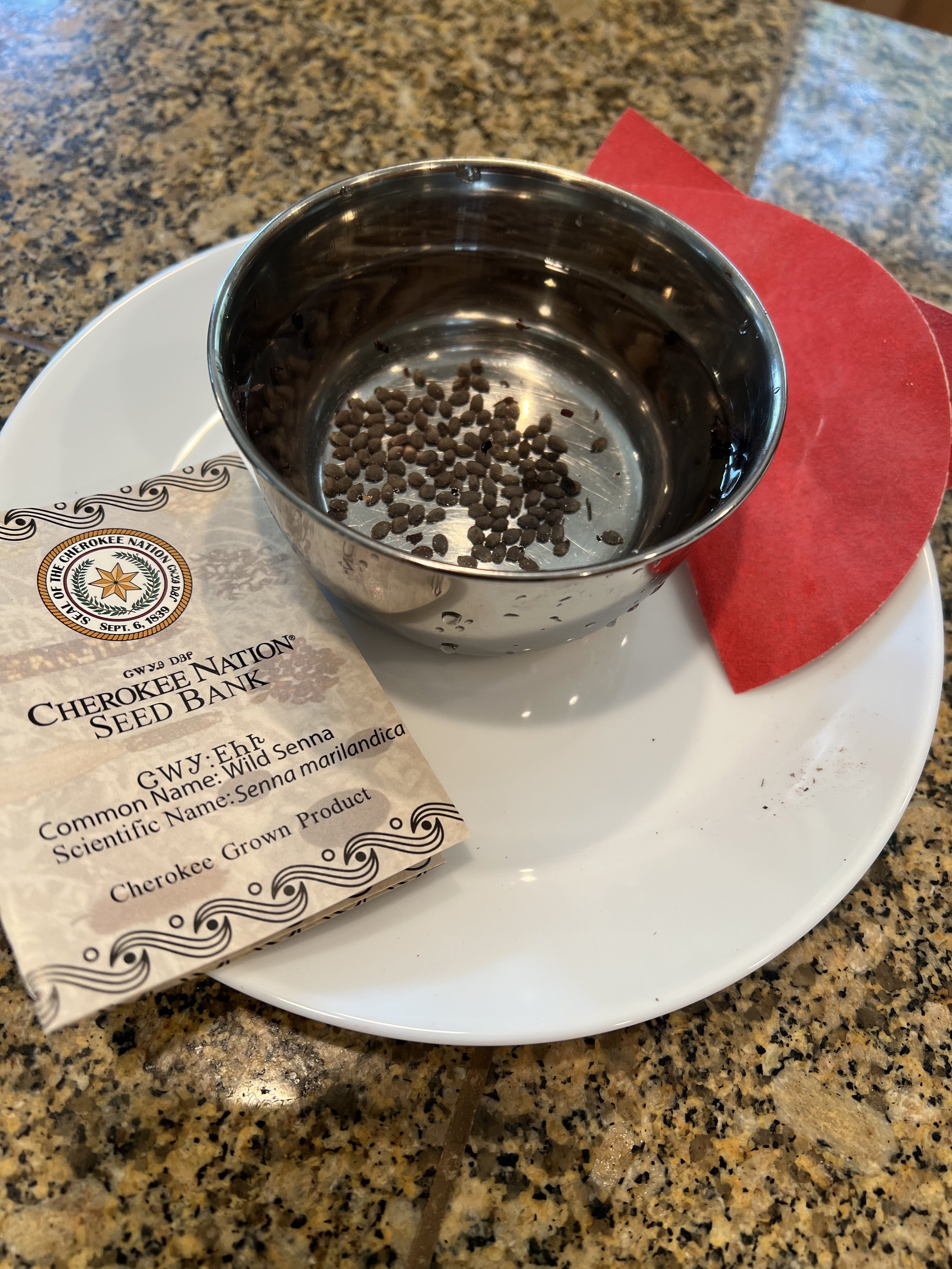
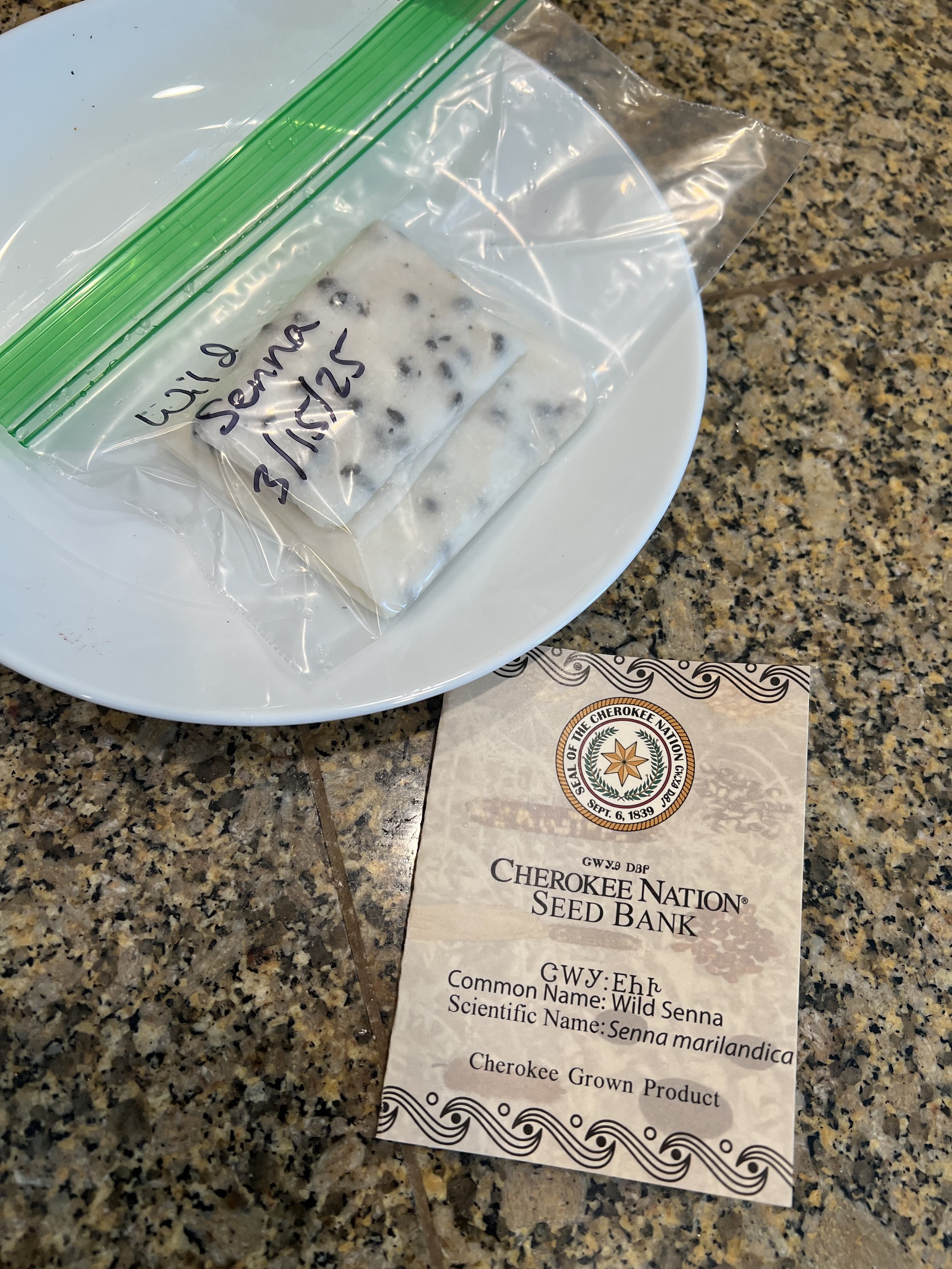
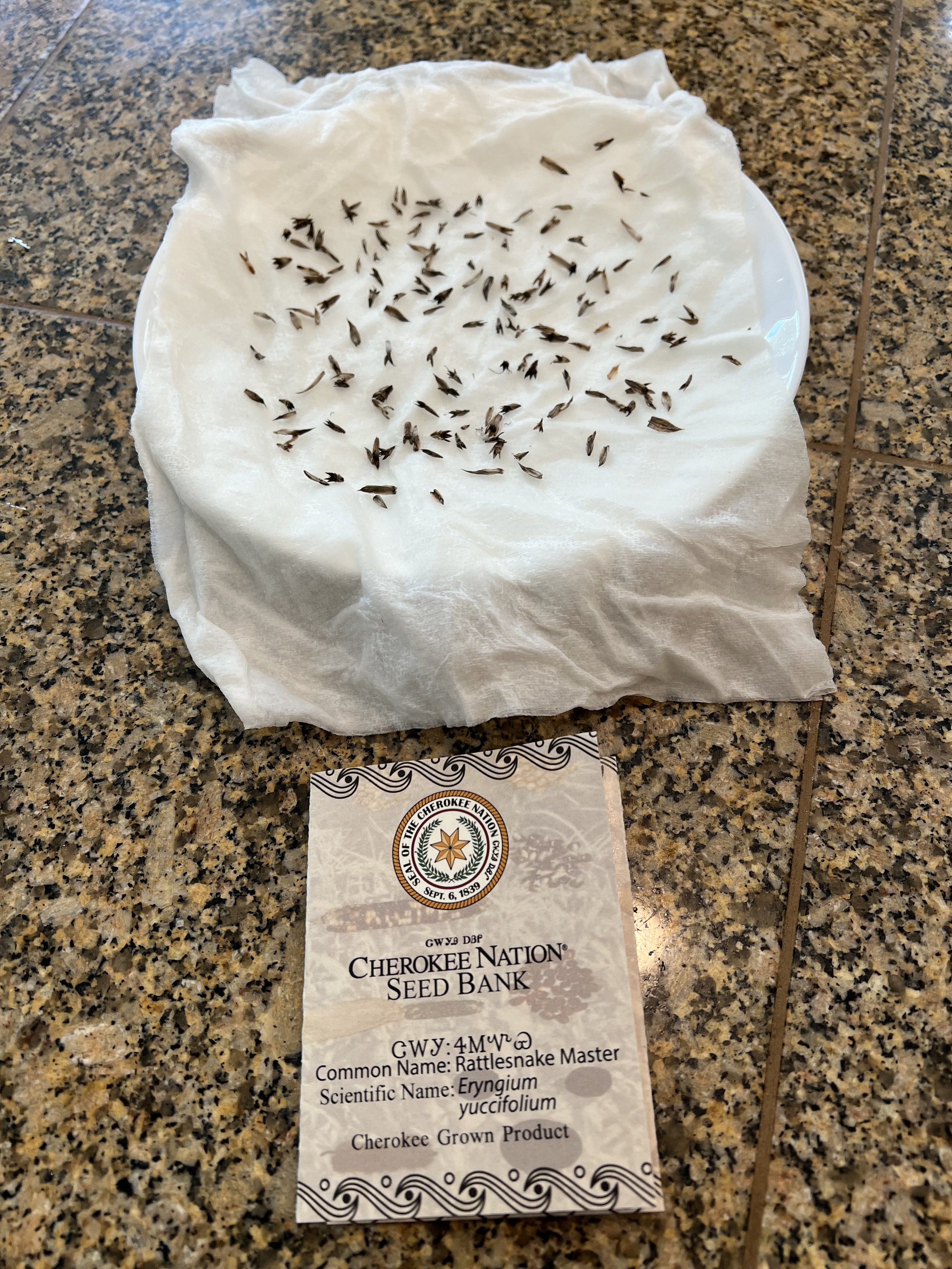
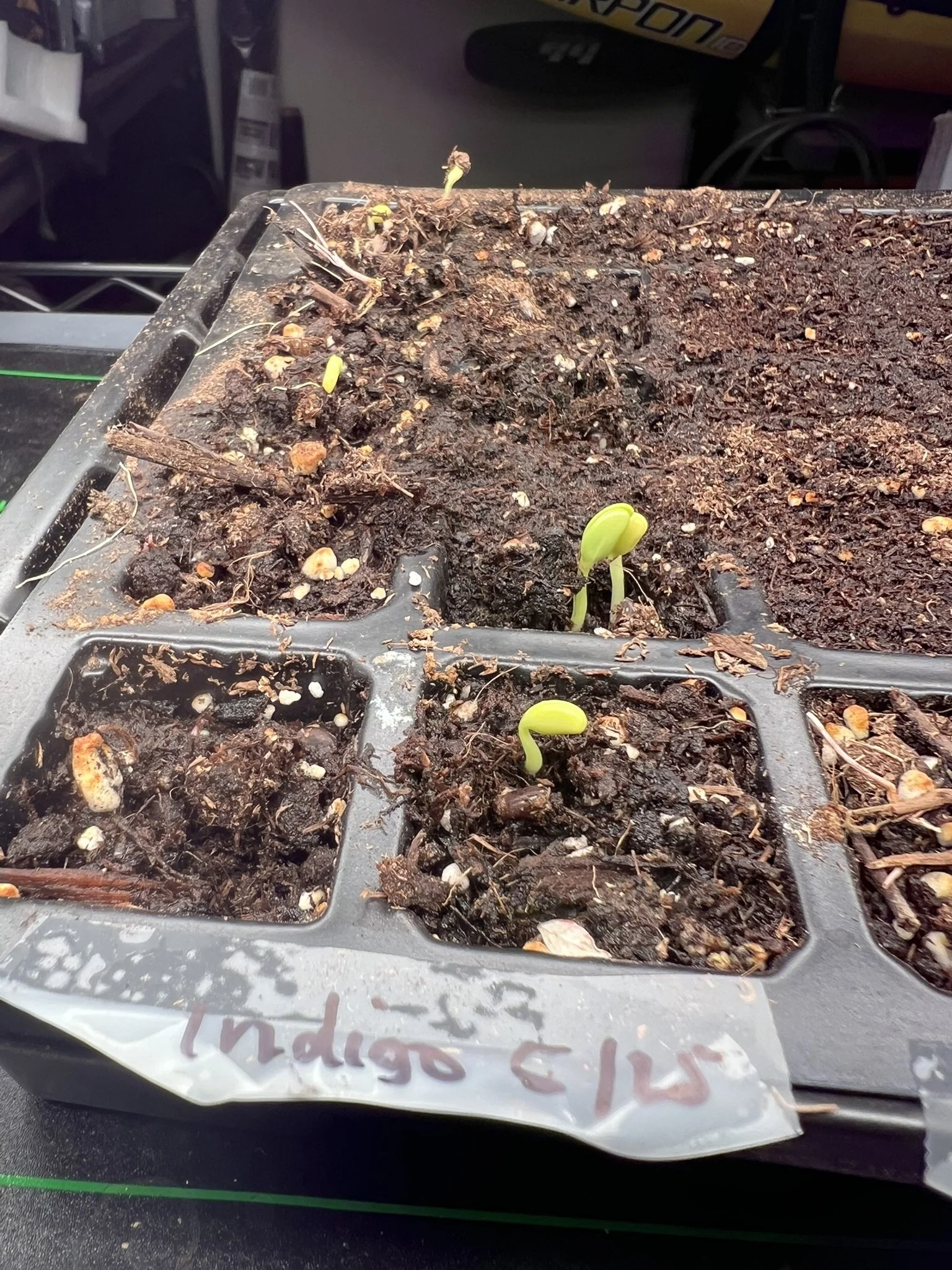
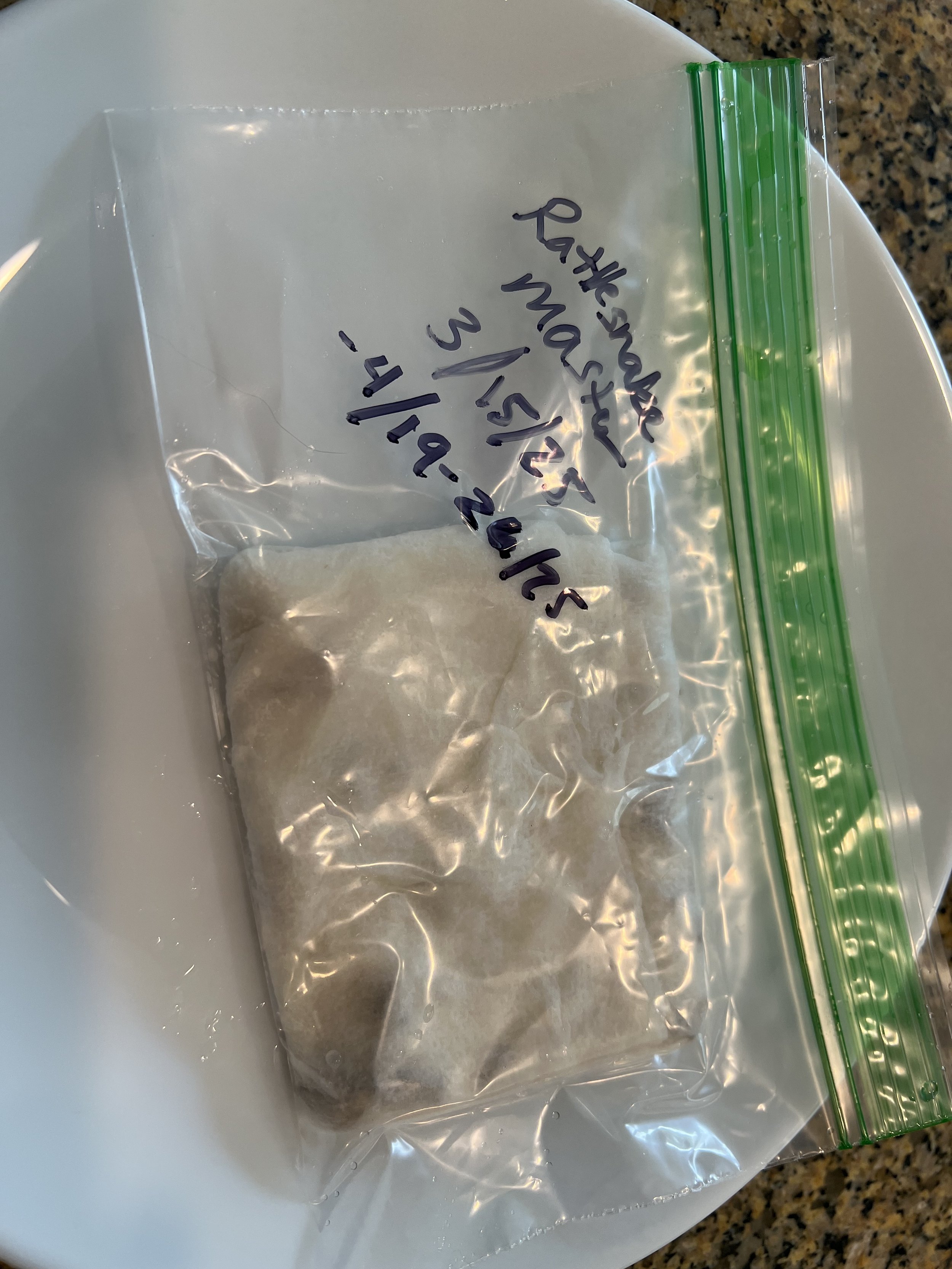
Some seeds benefit from a little extra help, especially when their germination rates are on the lower end.
Scarification with nail clippers - Some seeds have a hard outer coating that can be challenging for the little plant inside to break out of. I prepared the squash and my dipper gourd seeds by very carefully clipping the top end with nail clippers, just enough to start to expose the inner germ. You do not want to damage the inner seed.
Scarification with sand paper - Another method is to “scarify” seeds by scraping them with sandpaper, which I think works better for smaller seeds. I did this when starting Blue Wild Indigo and Wild Senna, and will be doing this when I start my Cherokee Corn Beads (Job’s Tears).
Cold stratification - Some seeds will not germinate unless they go through a period of cold, such as they would outside in the winter. I used this method with the Indigo and Senna along with Rattlesnake Master by wrapping them in a wet paper towel, putting them in a ziplock bag, and letting them rest in the refrigerator for about a month before planting. It worked well as I got some seedlings from all three types. I was generously gifted these from a cousin who got them from the Seed Bank.
Beans: Trail of Tears, Turkey Gizzard, Long Greasy
I planted three types of beans: Trail of Tears black beans, Turkey Gizzard brown beans, and Long Greasy white beans. The Trail of Tears beans and Turkey Gizzard beans are producing well. They have many large pods, which I will be patient and wait until they are dried so I can harvest the dried beans. The Long Greasy beans are growing vines well and have not yet flowered. I did get those in the ground later than the others. I anticipate that we will not get much new production while the temperatures are so high but once they drop a bit as the season continues, we will get additional beans. High heat prevents good pollination with beans.
Native Tobacco
Our newly planted, self-seeded, and overwintered tobacco plants are going strong. The overwintered second-year crop is not producing as large of leaves but they flowered and produced seedpods a second time. I will probably not overwinter again and will start fresh every year to get classic large leaf harvests. The self-seeded plants are the most robust, which is typically of self-seeded plants. The purple coneflower seed I planted last year, given by a fellow Cherokee citizen, has been beautifully flowering in abundance this year.
Reflection
I find such peace and connection when I tend my Cherokee garden. If you are growing any of our Cherokee plants, I hope that you do as well. We carry forward our ancestors’ knowledge and cultivate our heritage by growing these important plants that we have been in relation with for thousands of years. It’s our joy and honor to continue that relationship and connection to our ancestors. Wado for your work in doing so!!
Please reach out with any questions and share your planting experiences with us!!
Read More
The Cherokee Phoenix recently featured our efforts to grow and share heirloom seeds with the community. The mission is to nurture not just plants, but our culture, heritage, health, and food sovereignty. We recently gave away dozens of seed packets at our last membership gathering. There’s still more to give and next year will be even more fruitful through this program.
Related past features:
Sending you blessings as we cultivate culture, food sovereignty, and joy digging in soil!
— Sabrina McKinney
